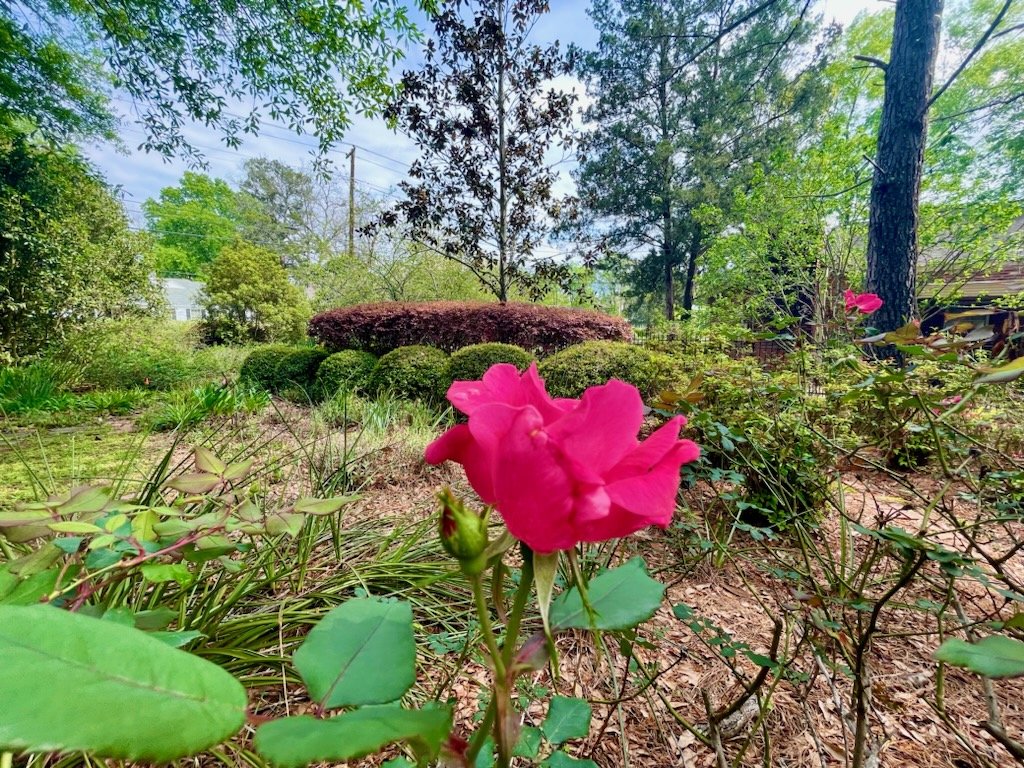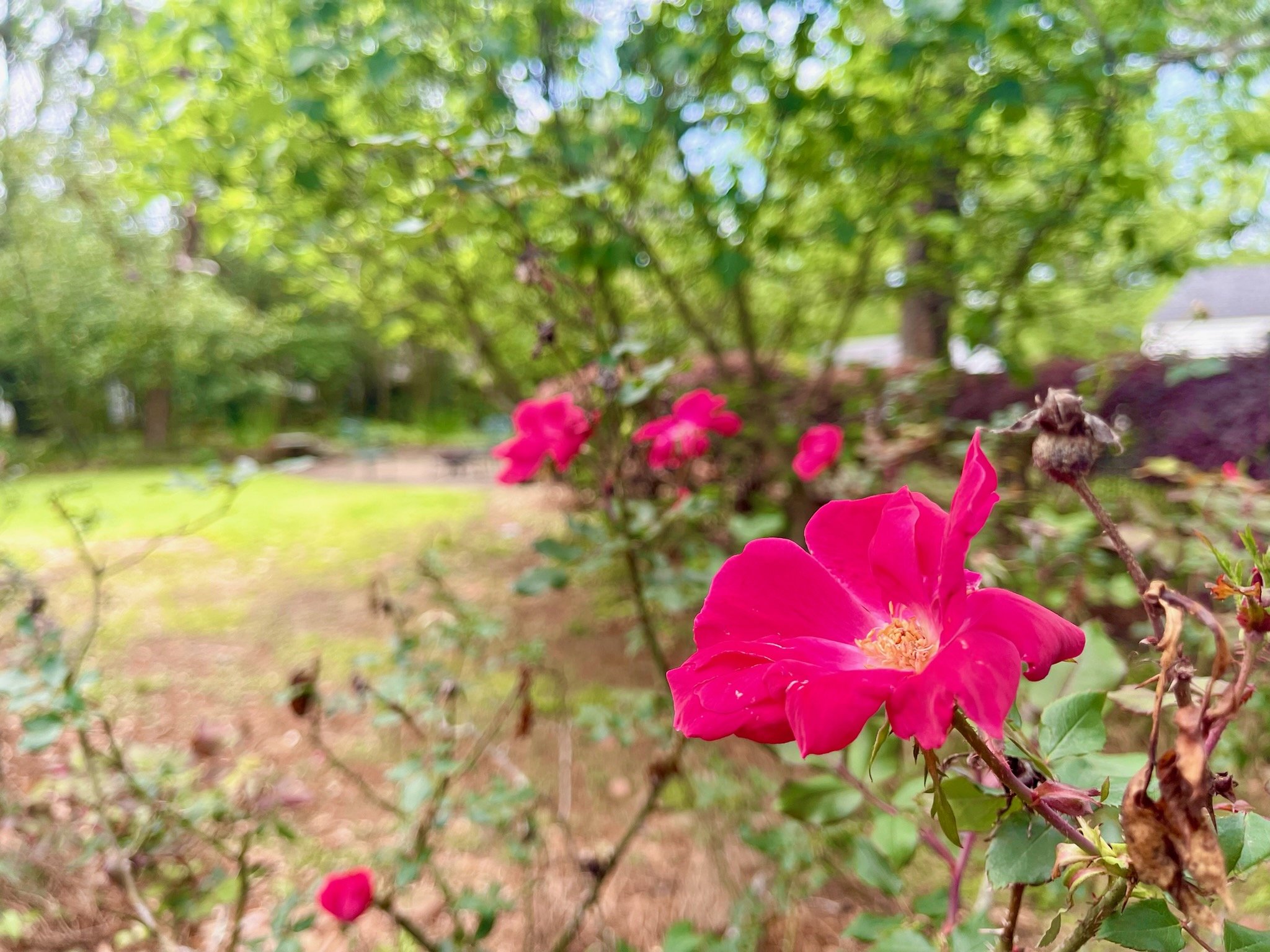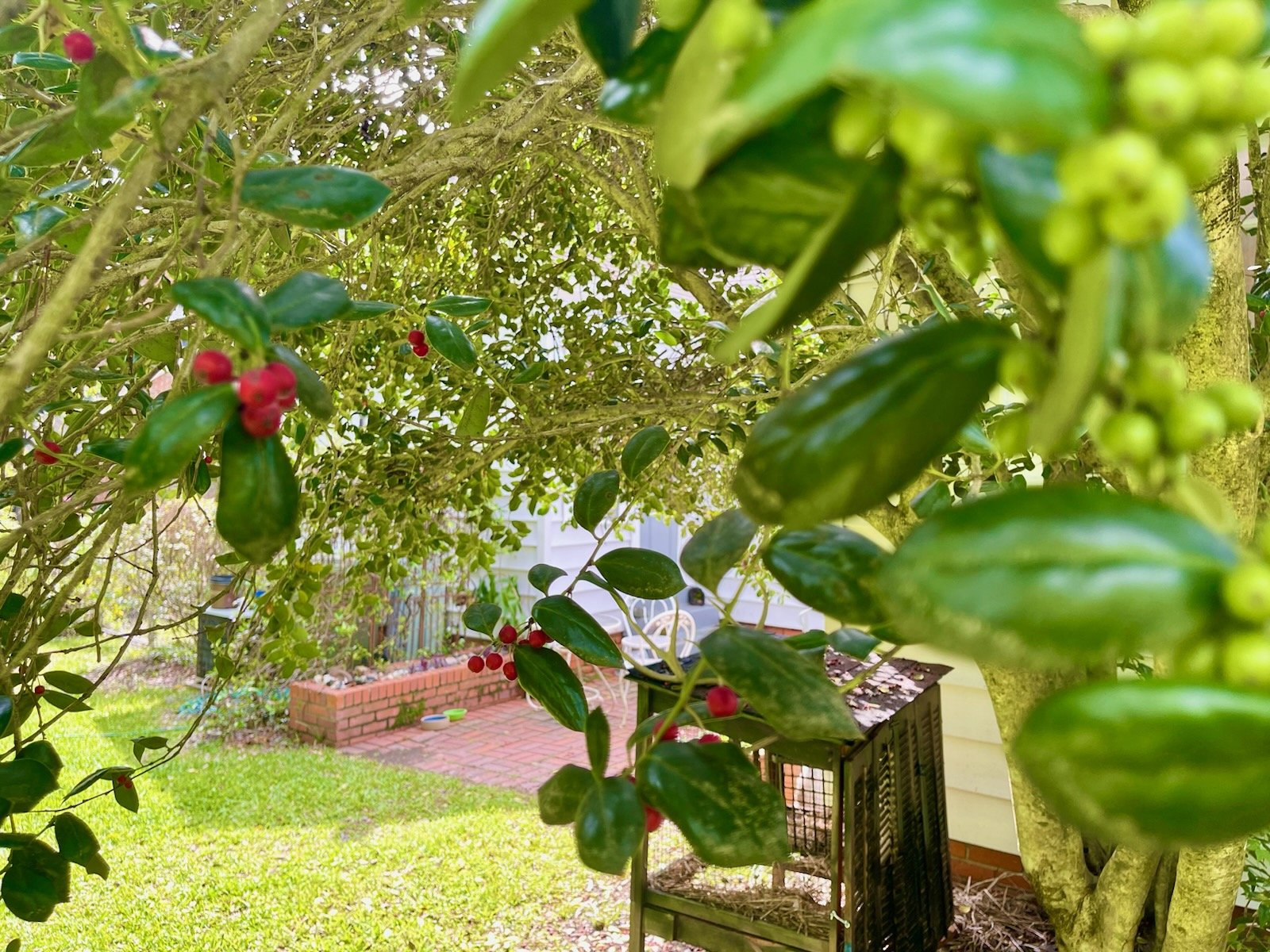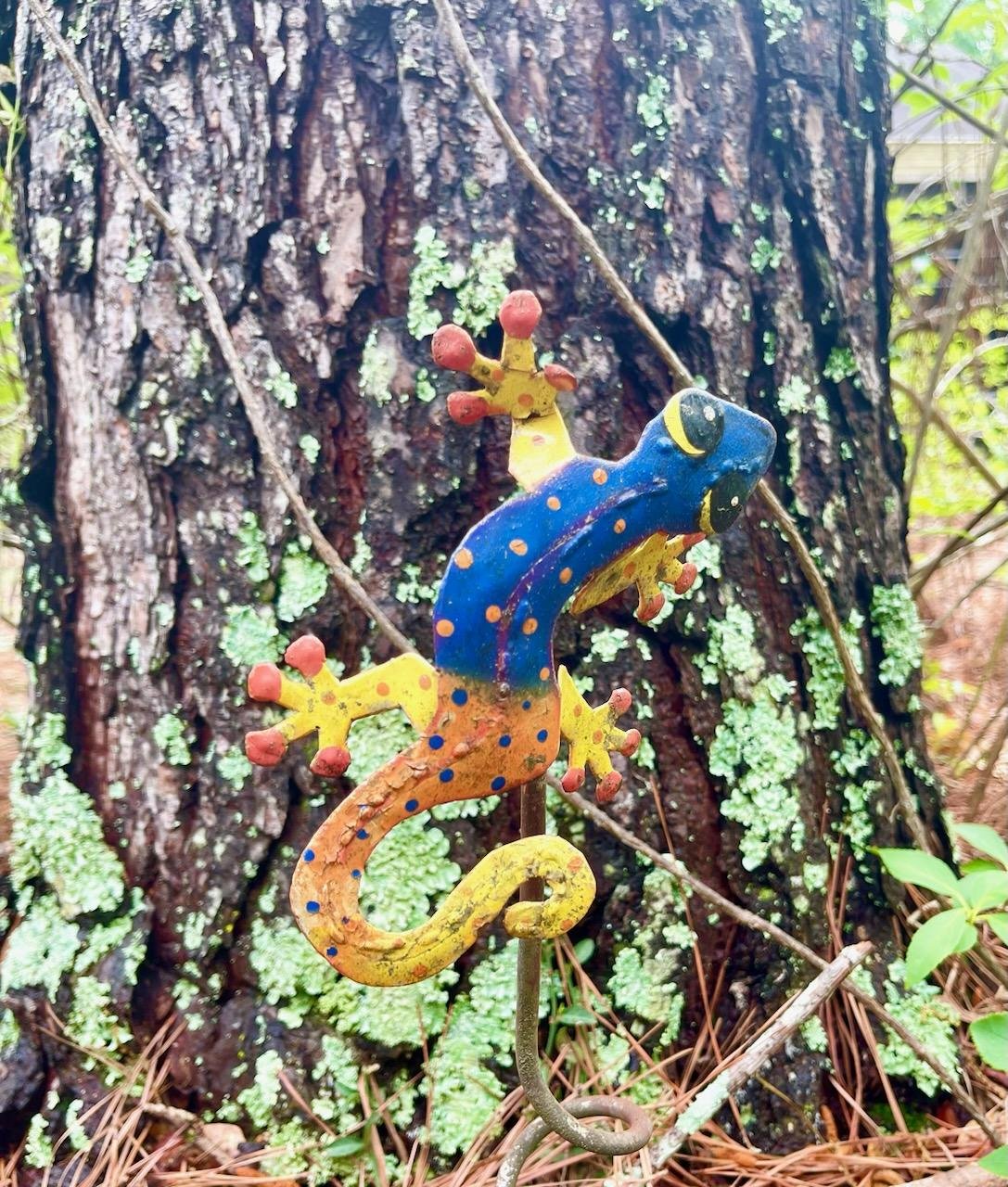Barbara Wiedemann’s 1938 home on Wilmington
Photographs & Interview by Vinny Chandrasoma
Story by Vinny Chandrasoma & Linda Dennard
Barbara Wiedemann’s Urban Forest on Wilmington Road
Yard of the Month
But I’ll tell you what hermits realize. If you go off into a far far forest and get very quiet, you’ll come to understand that you are connected to everything. Allan Watts
While moongazing on a clear night in Barbara Wiedemann’s backlot, it is not as hard as one might think to imagine yourself far from the motorcycle backfires and sirens on Norman Bridge.
Or imagine that composer John Cage is right. All sound is a break in the symmetry of silence. A noisy siren then could be akin to a whole note in music or the after tones of a Sufi bell… if you listen long enough and the sound intertwines with the peaceable night songs of birds and rustling leaves. Indeed, surrounded by plants and trees largely indigenous to Alabama and the South and cozied up to a rustic fire pit and a bottle of red wine, a visitor is reminded that serenity is possible even within the city limits.
As you peer into the abundant trees and shrubs in Barb’s woods, half expecting a black bear to amble out as it sniffs the jasmine and pine, you are reminded of what biologists have known for decades, that more lifeforms thrive in one square foot of forest soil than there are humans on the planet. Such abundance is humbling and makes the specter of a mall parking lot stripped of vegetation feel lonely, despite all the cars and shoppers. By comparison, the little forest on Wilmington supports a treasure of carefully selected and nurtured plants and trees which in turn support the earth, the animals, the air, providing the aesthetic pleasure of being within the healing bounty and beauty of Nature.
Imagine fig, pear and Loquat fruit, pine, oak, magnolias, knockout and drift roses, the orange blossoms of Texas quince, spiraeas, yellow iris, pyracanthas, loropetalum, azaleas, hydrangeas, many types of ferns, herbs such as Mexican sage, Russian sage, and oregano. Elaeagnus, Hosta lilies, salvias. violets, Acanthus in white and purple, Texas daisies, pink Cyclamen, North Carolina jasmine and confederate jasmine, Japanese magnolia, tea olives, holly and asparagus… and think sustainable urban ecosystem. These days, Barbara keeps climate change in mind when she plants. She waters the trees, but not the grass which is kept at a minimum and considers foliage that will survive extremes of weather while helping restore the Alabama landscape.
Barbara plants for birds, bees and butterflies, keeping their urban habitat hospitable. When the hawks haven’t caught her hens, the homey clucks of chickens as they scratch for seeds in the underbrush add a bucolic calm to the evening. Somewhere in the undergrowth a turtle, set free to roam, maintains its anonymity. The loss of wildlife and their habitats to climate change and human development is of particular concern to her.
For the retired AUM English Professor, the backwoods of her yard provide sanctuary when she can’t travel, engage in her sports, running, cycling, kayaking, wind surfing, snowboarding, skiing, hand gliding… Home is more like the mountains she and her dog, Angel, hike in the West for the long months of summer, or in the forests and wilderness in a dozen or more places around the globe she has visited.
Barbara’s frequently published poetry and chapbooks are most often inspired by her up close observations of Nature, and also her deep respect and love for plant and animal diversity.
Noticing all
but unnoticed
a woman hikes with her dog.
…….
Grateful
for the shadows
and the stillness
of the forest,
she does not move.
From Mountains & Pine Forests in Desert Meditations 2018 by Barbara Wiedemann
Barbara Wiedemann and Angel









